Is Sidemount Diving Technical Diving?
As a technical sidemount diving instructor, I have seen the growth and popularity of sidemount diving increase dramatically. That started when it was embraced by mainstream recreational dive training agencies in 2012. Despite sidemount flourishing, I often see divers arguing the question: “Is sidemount diving technical diving?“. The answer to this question is not as simple as a yes or no. It depends on a number of factors and perspectives.
Sidemount isn’t only for technical diving
A sidemount diver wears the tanks on their sides, rather than on their back. This configuration provides many benefits, such as:
- Improved streamlining
- Greater control over the tanks
- Better access to equipment and valves
However, sidemount diving also has its own set of challenges and complexities. Such as the need to:
- Manage multiple tanks
- Monitor and control buoyancy
- Maintain trim and stability in the water
Technical diving, on the other hand, is a form of diving that involves diving beyond the limits of recreational diving. That includes:
- Diving beyond the 40m/120ft depth limit
- Dives that incur mandatory decompression stops
- Venturing beyond the light zone in caves and wrecks
The nature of technical diving exposes divers to more frequent and more severe risks.
To mitigate those risks, technical diving requires advanced training, specialized equipment, and a higher level of skill proficiency and experience. Technical diving also involves significantly higher levels of physical and psychological demand.
So, where does sidemount diving fit into this spectrum of diving?
To answer this question, we need to consider the technical aspects of sidemount diving. This includes the skills and equipment required, the procedures and protocols followed, and the level of physical and mental demand.
We also need to compare sidemount diving to other forms of technical diving. Such as decompression diving, cave diving, or advanced wreck penetration diving.
In this article, I will examine the technical aspects of sidemount diving and suggest whether it qualifies as technical diving. I will also discuss the implications of this answer for divers, dive training organizations, and the diving industry.
Whether you are a sidemount diver, technical diver, or are simply interested in the topic, this article will provide valuable insights.
What is Sidemount Diving?
Sidemount diving is a scuba equipment configuration where the diver carries cylinders suspended on the sides of their body. The tanks are attached to the diver via an elasticated bungee system. That provides stability, security, and the ability to keep the tanks in horizontal trim relative to the diver.
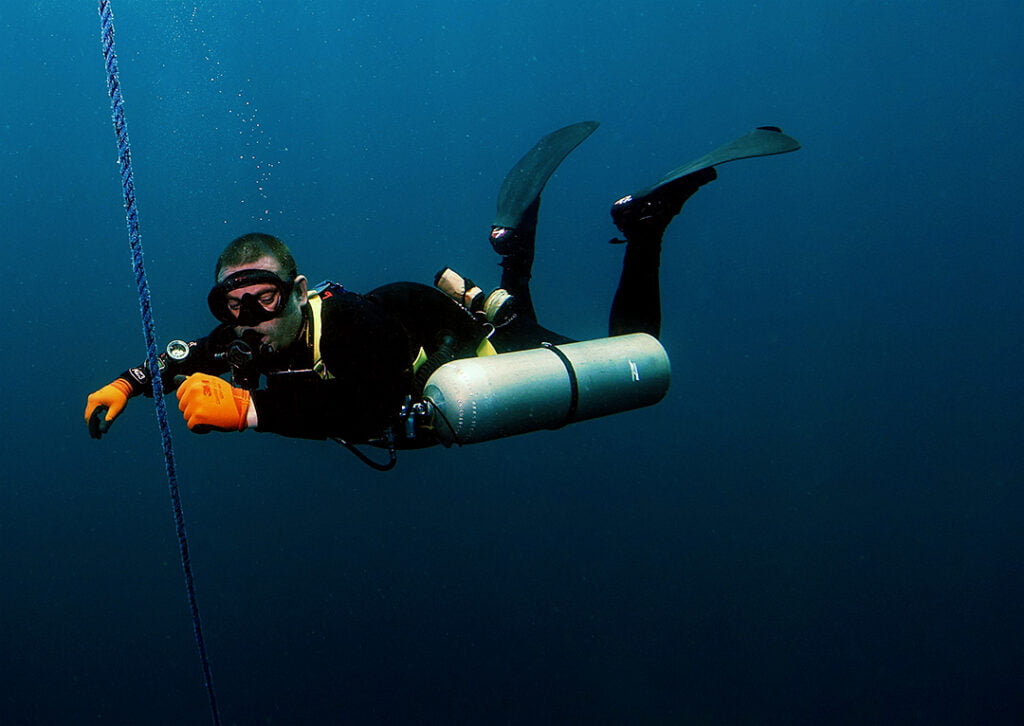
The advantages of sidemount diving
Sidemount diving offers a number of benefits compared to traditional backmount diving, including:
- Improved streamlining
- Increased mobility
- Greater ease of access to the tanks and regulators
One of the main advantages of sidemount diving is the increased freedom of movement and flexibility. The diver is able to swim through narrow openings or tight spaces with ease. This is particularly useful for divers who are exploring caves, wrecks, or other overhead environments.
Another advantage of sidemount diving is the improved safety and redundancy. By carrying two tanks, the diver has a backup supply of air if one cylinder or regulator fails.
This is important for dives that do not allow immediate ascent; such as in caves, wrecks or when in deco. It is also a substantial safety benefit for recreational divers who wish to be self-reliant should an emergency occur. Gas redundancy ensures that a critical failure does not become an emergency.
Additionally, sidemount diving can be less physically demanding on the spine. Especially as cylinders can be attached and removed when the diver is already in the water. This is a big advantage for divers with back injuries.
The disadvantages of sidemount diving
However, sidemount diving is not without its own set of challenges. One of the main challenges is the need to manage multiple tanks and valves. This task can be complex and increase cognitive loading on dives.
Sidemount diving also stresses the need to maintain proper trim and stability in the water. This can be demanding for less experienced divers. Configuring sidemount gear is also more complex than backmount dive kit. As such, the diver needs to understand specific principles that have to be applied.
Additionally, the diver must be trained in the proper procedures and protocols for sidemount diving, such as:
- How to don or remove tanks
- Monitoring and balance their gas supply in two cylinders
- Handling emergency situations in unfamiliar dive gear
Read this comprehensive article that examines the pros and cons of sidemount versus backmount diving in detail:
How did sidemount diving develop?
Sidemount diving was originally conceived by sump divers in the UK. They needed a rudimentary gas system to pass through flooded cave sections. Traditional scuba gear was too bulky for their needs. For that reason, they adopted a method of attaching smaller cylinders to the waistbelt of their climbing harnesses.
The potential of sidemount configuration quickly caught the attention of the wider cave diving community. As a result, it quickly began being incorporated for cave exploration in Mexico and Florida.
Through the 1980s and 90s, leading cave explorers adapted rudimentary sidemount configurations into fully functional diving systems. These included a BCD, inflators, pull dumps, and a variety of more diving-specialized harness designs.
Sidemount diving remained in the cave diving niche until 2012. Then mainstream dive training agencies recognized the benefits and appeal of sidemount diving for recreational divers.
Within 1-2 years most dive training agencies had released sidemount courses for recreational diving. In some cases, also for technical divers. Sidemount has exploded in popularity since, with a recorded growth of about 10% per year (TDI/SDI training figures 2017/18).
Read a full description of the history of sidemount diving:
When and where sidemount diving is commonly performed
Sidemount diving remains very popular amongst the cave diving community. However, it is now also frequently used as a configuration for technical decompression diving in the ocean.
Many thousands of recreational divers have qualified to use sidemount over the last decade. Also, it is frequently seen on dive boats and at vacation dive resorts across the globe. Rebreather divers have also adopted sidemount configuration; with an increasing number of sidemount CCR systems available to buy.
What is Technical Diving?
Technical diving is a form of diving that involves diving beyond the conventional limits of recreational diving. In particular, it is associated with diving that involves:
- No immediate access to the surface: cave and wreck penetration or mandatory decompression stops.
- The use of multiple gas mixtures on a single dive.
- Complex dive and gas planning
- Uncompromising risk mitigation
- Depths below the recreational limit of 40m/130ft
- The use of oxygen mixtures above 40% O2
- The use of helium in breathing gasses (trimix) to manage narcosis, oxygen toxicity, and gas density risks.
Technical diving requires very advanced training, specialized equipment, and a higher level of skill, and experience compared to recreational diving. The divers are accustomed to conducting dives with significantly higher levels of physical and psychological demand.
Read more in my comprehensive article explaining what technical diving is:
The main differences between technical diving and recreational diving
The main differences between technical diving and recreational diving include:
- Maximum permissible depth and duration
- Complexity of equipment and procedures utilized
- The gas mixtures used
- Uncompromising nature of the training required.
However, the key difference is that technical divers don’t have immediate access to the surface in an emergency.
Recreational diving is limited in scope. Specifically it must retain the ability for a diver to quickly reach the surface whenever something goes wrong.
Technical divers do not have that option. They must be planned, prepared, and capable of dealing with any eventuality that arises without surfacing.
Examples of technical diving activities and specialties
Technical diving is most frequently used to describe decompression diving. However, it is also commonly used as an overarching term to include:
- Overhead environment diving
- Cave diving
- Advanced wreck diving
Each facet of technical diving has its own unique set of skills, specialist equipment, and procedures. Likewise, each requires a highly specialized training program.
Some of the most popular technical diving specialties include:
- Advanced Nitrox
- Decompression Procedures
- Trimix
- Technical Wreck Diving
- Cave Diving
How technical is sidemount diving?
Sidemount diving is slightly more complex than standard backmount diving. Especially so with respect to the configuration and setup of sidemount gear.
To achieve optimal diving performance, there is a need to understand:
- Principles on how the sidemount harness has to fit the individual
- Different methods of using bungees to retain the cylinders
- Considerations for different cylinder types and diving environments.
That attention to detail with equipment configuration is more reminiscent of technical diving.
Technical divers typically use a harness-based wing BCD that requires individual sizing. This differs to a jacket BCD which is simply adjusted pre-dive with quick-release toggles.
Sidemount diving also involves cylinder handling in water and the use of boltsnaps to secure equipment to D-rings. Both are common tasks in technical diving, but rarely used in backmount recreational diving.
On the other hand, sidemount diving doesn’t really involve more complex protocols or procedures. In most cases, existing backmount skills are simply converted for the differing equipment.
Sidemount divers need to know how to:
- Share air
- Control their buoyancy
- Deal with a free-flow
- Assist another diver in distress.
All of those are skills taught at open-water level training.
Recreational divers can use two diving cylinders on a dive. For instance, a primary cylinder and a pony cylinder. As such, that factor really doesn’t push sidemount diving into a higher level of categorization.
The only additional skillset that doesn’t apply to backmount divers is the need to balance the pressure in two cylinders. That is simply achieved by swapping regulators routinely during a dive.
Specialist equipment does not equal technical diving
Sidemount diving is certainly a specialist, equipment-focused, approach to diving. But, it doesn’t meet any other definitive metric of technical diving. The core skillset is adapted, but otherwise near-identical to what any recreational diver learns.
Basic sidemount certification does not include decompression or overhead environment diving. For that reason, it does not increase the limits to which the diver can dive. Nor does it increase the risks they are subjected to.
Technical diving involves very specialist equipment, but that alone does not define it. It is an entire approach to diving, not just an equipment configuration.
Technical diving has to encompass the risk-averse mindset:
- Detailed planning and preparation
- Comprehensive protocols
- Careful risk mitigation
These have to exist because returning to the surface is not an immediate option.
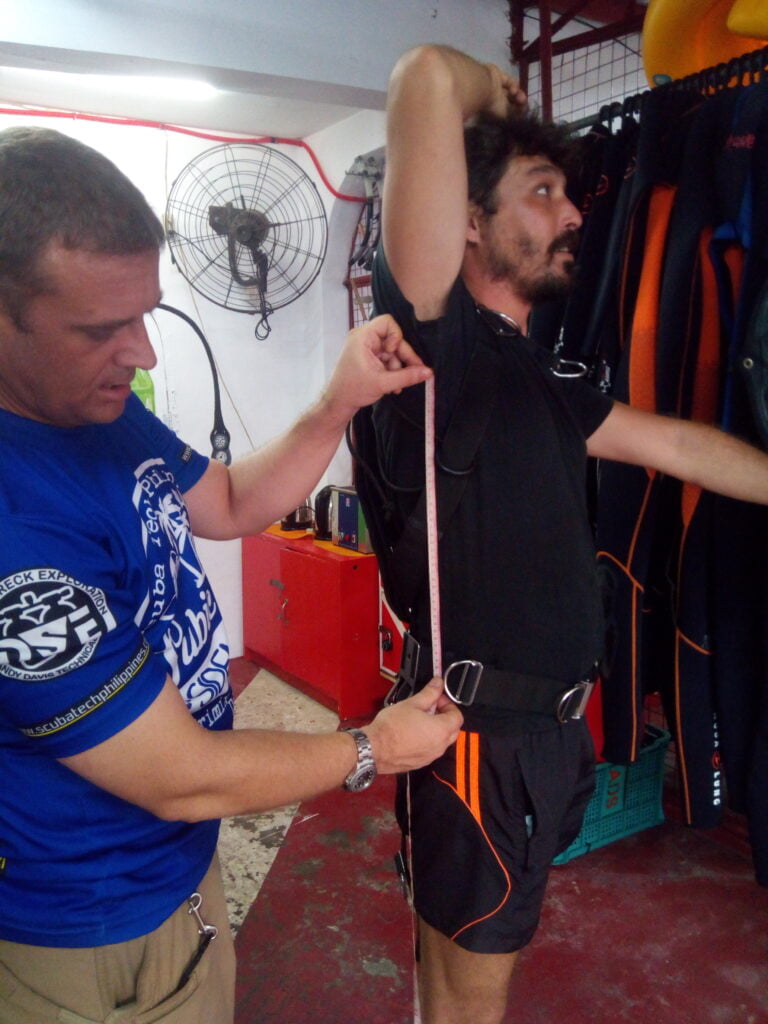
The training and experience necessary for sidemount diving
The level of training required for sidemount diving varies depending on the certification agency. Typically, recreational divers are required to complete a basic 2-3 day sidemount specialty course.
In general, a sidemount diving specialty course will include both theory and practical components. The theoretical portion covers the fundamentals of sidemount diving, including:
- Gear configuration
- Dive planning
- Emergency procedures.
The practical portion involves in-water training sessions, where the student will learn how to:
- Properly set up and use the sidemount gear
- Perform skills specific to sidemount diving
- Use gas management techniques
- Buoyancy during a sidemount dive.
Sidemount certification is not comparable to the much more comprehensive and intensive training necessary to become a technical diver.
Technical diving courses are far more detailed with respect to:
- Decompression theory
- Advanced dive planning
- Use of different gas mixtures
- Team diving principles
- A wider spectrum of emergency protocols
Additionally, certification performance standards typically demand reliably ingrained responses.
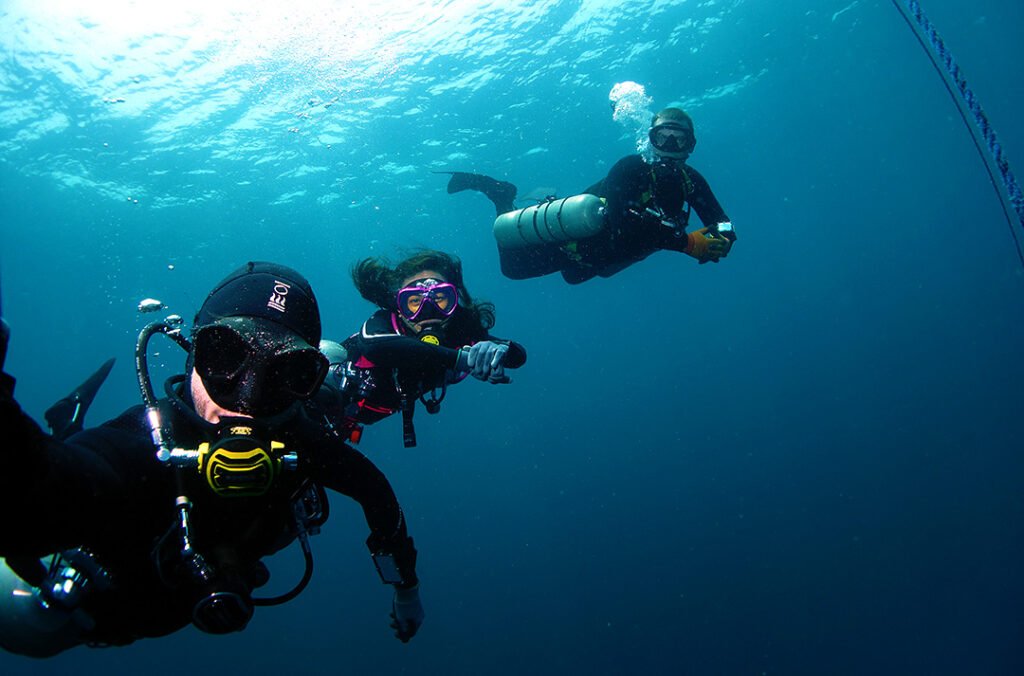
The level of certification required to take a sidemount diving specialty course varies. That said, most agencies require a minimum of Open Water Diver certification. Again, that pales in comparison to the prerequisites necessary to enroll in a technical diving course.
As a bare minimum, most entry-level technical courses require the following certification:
- Deep Diver
- Nitrox
- Rescue Diver
Additionally, there will be a minimum logged dive experience. In turn that usually includes a stated proportion of deep recreational dives and nitrox use. Some technical diving agencies also require a robust pre-course proficiency assessment. This ensures that a competent level of fundamental diving skills exists.
Why do some divers argue that sidemount is technical diving?
Over the years, I have seen encountered divers who express strong opinions that sidemount diving is technical diving. The reasons for those opinions vary, but here are a few examples:
Anything beyond the bare minimum is considered ‘technical’
For some recreational divers (and instructors), anything beyond simplistically flinging on a basic jacket BCD is considered to be technical. These tend to be the same divers who express a belief that robust fundamental diving skills are also “technical diving”.
In short, anything beyond the basic training provided on an Open Water course is dismissed as too complex for a recreational diver.
Snobbery and elitism
I have observed technical or cave divers suggesting that sidemount is only applicable at tech levels. However, there is little justification to substantiate the opinion. Those divers are fully aware that sidemount is a popular recreational diving specialty, but dismiss it as a passing fad.
It is over a decade since sidemount went mainstream. For that reason, the “passing fad” criticism should be laid to rest: it was incorrect.
I have seen suggestions that sidemount diving only has real benefit to enable exploration in confined overhead spaces. Or that sidemount is too complex to have practical merit on recreational dives. Tens of thousands of passionate, active, and capable recreational-level sidemount divers seem to objectively disprove those subjective opinions.
Sidemount has a spectrum of benefits and appeals to a wide range of divers. Consequently, no single diving niche has a sole claim upon it.
Masking gaps in their dive knowledge
It’s sad to say, some divers (and instructors) will disinform others to mask deficits in their own knowledge and capabilities. Ego-defensive behavior can be to blame. Sadly, some divers simply loathe to admit that they don’t know, or cannot do, something.
I have heard recreational instructors telling divers that sidemount is technical purely to mask and deflect from their own ignorance. It’s sad, but it happens.
Sidemount is not consistent with a driving philosophy
There is one dive training agency, GUE, that retains sidemount diving until very advanced levels of cave diving. This is not because they believe that sidemount is technical diving. Instead, it is because they openly recognize sidemount as a legitimate approach for recreational diving. But rather, because sidemount is not consistent with their own highly standardized system approach.
Sidemount diving is not technical diving
Technical divers may utilize sidemount equipment. After all, it did originate from high-level cave explorations. However, that does not make sidemount a technical level of diving. Many evolutions in diving approach and equipment have emigrated from advanced-level diving down to be adopted within mainstream diving. That’s simply how development works.
Sidemount requires specialist knowledge, especially in gear setup, but that should be true for any diving specialty. It is unfortunate that the modern dive training industry lost sight of the need for specialist expertise.
Sidemount can be considered slightly more complex to operate and dive than traditional backmount jacket systems. However, that slight increase in complexity is not comparable to the high complexity of technical diving.
Ultimately, a sidemount diver requires only the same fundamental capabilities that every scuba diver should possess. If the ego is removed from the equation, there are no defensible factors to substantiate that sidemount is exclusive to tech or cave.
Sidemount is a modern approach to diving that offers a wealth of benefits to the divers who use it. The soaring popularity of sidemount within the recreational diving community over the last decade supports that claim.
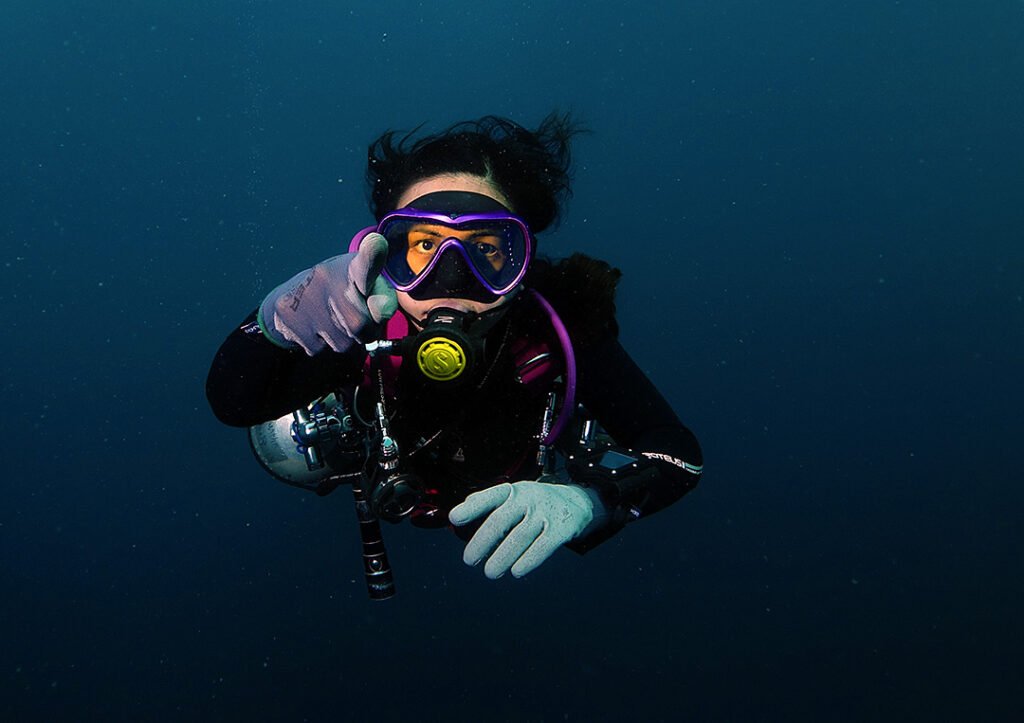
Are you a sidemount, technical, or cave diver? Share your own views on this debate in the comment section below!
Buy my ‘Sidemount: Principles For Success’ ebook now!

My comprehensive guide to sidemount configuration and development as a diver.
178 Pages. PDF format. Only $25
Fully Illustrated!
Chapters include:
- Sidemount history, design styles, and cylinder principles
- Harness and bungee setup and sizing
- Configuring deco/stage cylinders
- Diagnosing cylinder trim problems
- Regulators and hardware
- Training and skillset development
About The Author

Andy Davis is a RAID, PADI TecRec, ANDI, BSAC, and SSI-qualified independent technical diving instructor who specializes in teaching sidemount, trimix, and advanced wreck diving courses.
Currently residing in Subic Bay, Philippines; he has amassed more than 10,000 open-circuit and CCR dives over three decades of challenging diving across the globe.
Andy has published numerous diving magazine articles and designed advanced certification courses for several dive training agencies, He regularly tests and reviews new dive gear for scuba equipment manufacturers. Andy is currently writing a series of advanced diving books and creating a range of tech diving clothing and accessories.
Prior to becoming a professional technical diving educator in 2006, Andy was a commissioned officer in the Royal Air Force and has served in Iraq, Afghanistan, Belize, and Cyprus.
In 2023, Andy was named in the “Who’s Who of Sidemount” list by GUE InDepth Magazine.
Purchase my exclusive diving ebooks!
Originally posted 2023-02-13 19:19:39.








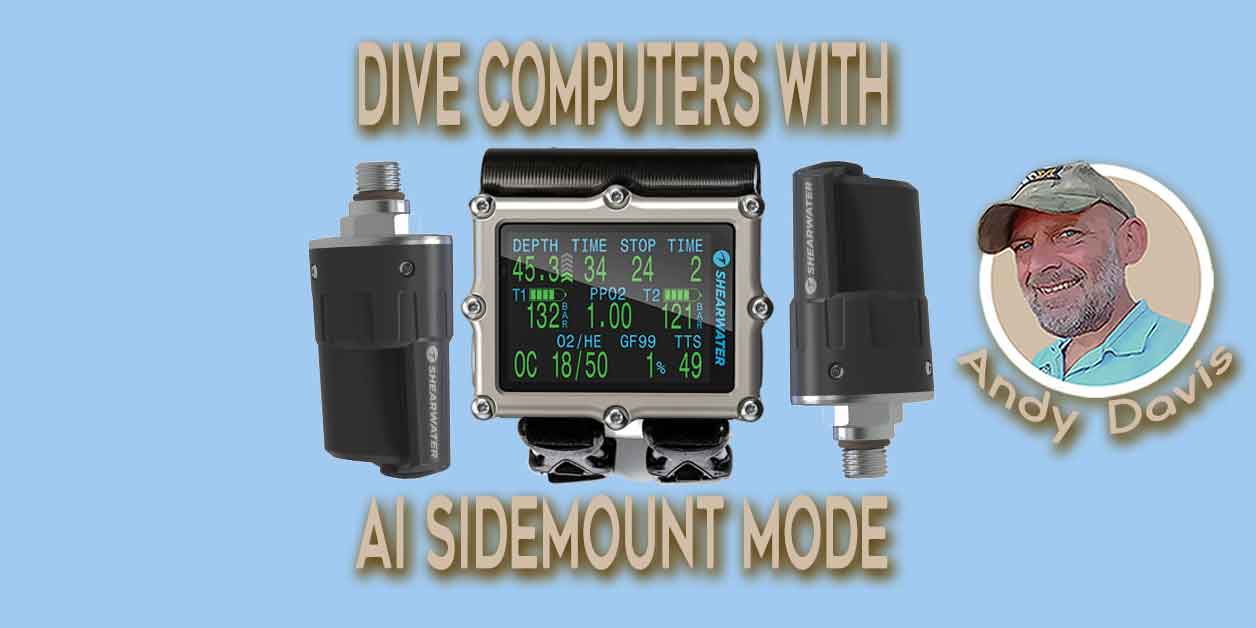

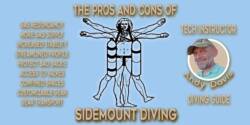
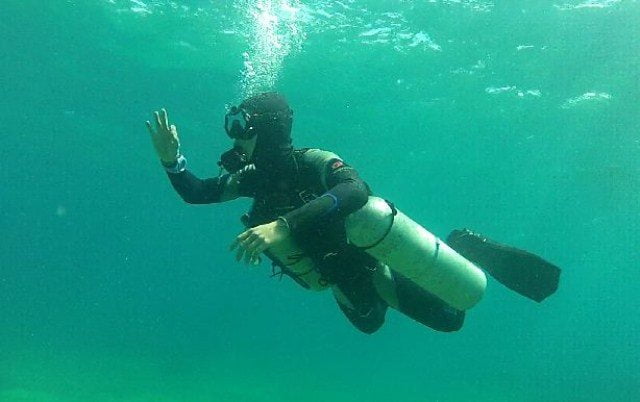
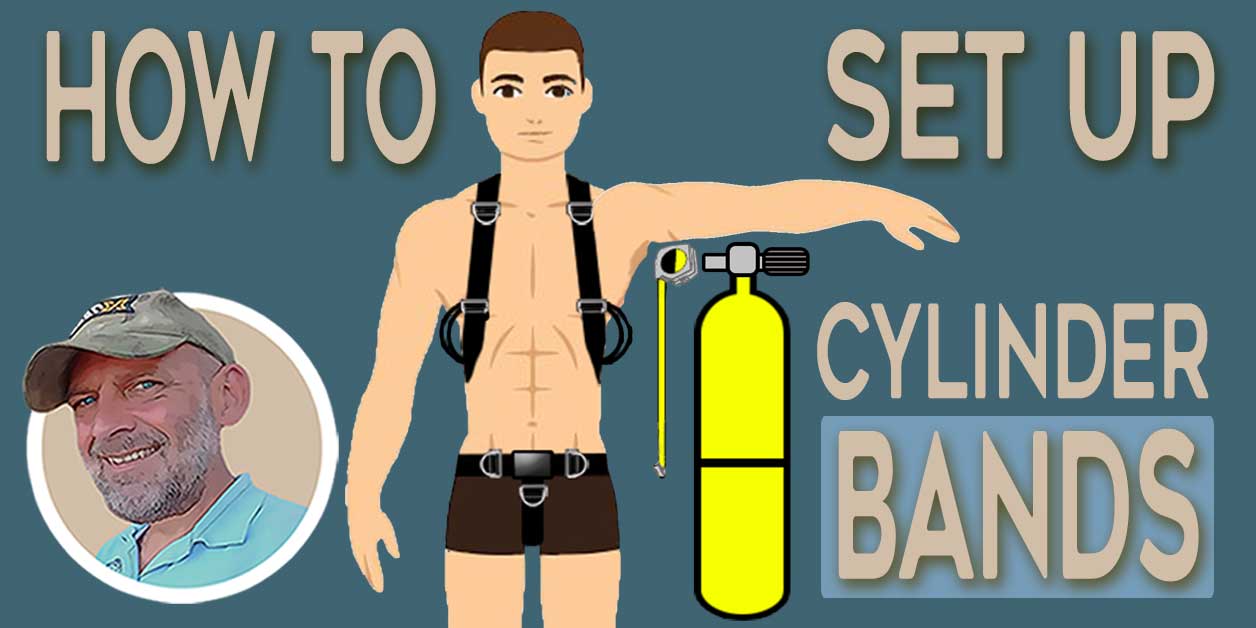



YES! SM (sidemount) is slightly more complex than basic BM (backmount) diving, but no where as complex or additional risk as technical diving.
Fitting the SM equipment to the diver is more individual than with BM, but not hard and both the harness and tanks could easily have quick adjustments. I do just that with my tanks (which are sourced locally) when traveling. Even having left/right valves is just nice, but not necessary.
More importantly, diving SM should not really be any more complex than diving BM.
SM isn’t embraced by many divers, instructors, etc because it is not understood. That will change with article like the above and time. Personally I have made the change (strictly Rec profiles) and can’t ever see a reason to go back. That is after 53 years of diving and using a eclectic variety of equipment.